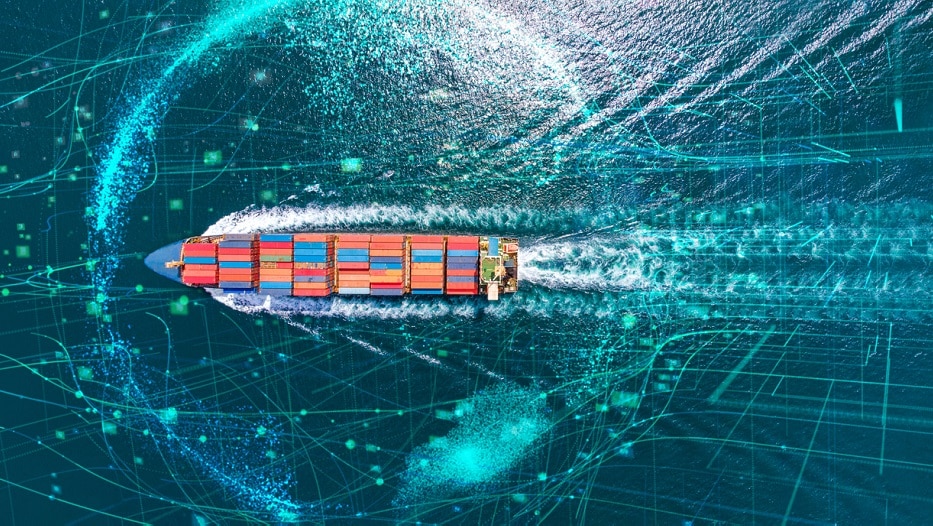Julia Maria Gomez de Avila Segade | 21/02/2023
The marine industry is undergoing a technological transition that could revolutionize activity in the sector. While many of the ongoing fields of research are focused on sustainable transportation, there is another priority objective: making ships autonomous.
In the most recent workshops organized by the Spanish Association of Maritime Law, a question came to light in the middle of the opening ceremony. “If planes fly without a crew, why not ships?” The truth is that, although autonomous ships are defined in the Navigation Law, and there are promising studies on Artificial Intelligence, the main progress so far has only been in pilot scheme experiences and current regulations prevent a ship from sailing without the permanent control of a supervisor present.
Despite the contextual challenges, the maritime industry is getting closer to overcoming this technological milestone and significant R&D investment efforts are being made to achieve this end. “Innovation and technology are essential to improving the performance of ships, their sustainability, their efficiency, and respect for the marine environment,” explains Agustí Martin i Mallofré, Dean of the Barcelona Nautical School (FNB).
The objectives being pursued today are the implementation of new fuels, ship automation, improved logistics, and the adaptation of ports. “Ships are heading in the direction of using alternative energy sources to fossil fuels,” says the expert and Captain of the Merchant Navy. In this regard, progress has already been made with the electrification of assets, both ships and docks, while tests have so far been carried out only on small ships and over short distances. Along with this environmental challenge, it will be Artificial Intelligence (AI) that marks “the next big revolution” in the industry.
Automation challenges
One of the main impediments faced by this industry for the establishment of new technologies linked to autonomous navigation is the current regulatory framework. “In 2017, the International Maritime Organization (IMO) began an exploratory study of all regulations that could be affected by this development. The first conclusion of the study was that, in order to organize a world where ships do not need a crew, it is first necessary to define exactly what an autonomous ship is. Currently, a Marine Autonomous Surface Ship (MASS) is considered to be any surface ship capable of sailing thanks to AI programs and without the need for human interaction”, explains Martin i Mallofré.
Depending on their degree of autonomy, the IMO divides ships into four major categories:
– Ships with automated processes and decision support.
– Remotely controlled fleets, but with a reduced crew on board.
– Remotely controlled ships without crew on board.
– Fully autonomous ships.
Given the technological advances, the first two degrees of autonomy could be implemented today. “For the first case, there are already automation, route planning, and management systems for the machine and facility chamber; for the second, ships that can be manned and controlled remotely, depending only on their autonomous sailing system”, says the Dean of the FNB. The reliability of all onboard equipment and facilities has been fundamental in the development of these applications.
“Predictive maintenance, that is to say the key data-based technique to anticipate errors, is the best incorporation of this technology”
Artificial Intelligence in the maritime industry
The maritime industry is starting to make use of AI with different companies – some with the support of university research centers – designing autonomous ships and tracking systems, although the FNB warns us that they have not yet been implemented in large cargo ships. “There are a very small number of prototypes that are tested as pilot ships, but in the future they will apply to ships as they sail the ocean autonomously, with land-based tracking, and the ship will be controlled remotely with combined reality and AI technologies”, which have so far been limited to complex and very specific operations such as, for example, oceanographic vessels, simulations, or the handling of Remotely Operated Vehicles (ROV) in operations on the sea bed.
Without getting as far as achieving such unmanned navigation, the technology has been successfully applied in merchant ships. “The equipment integrated into a pilot house has many automatic systems”, the expert says, “for example, ECDIS, an electronic chart display and information system that allows a navigation route to be planned, launched, and monitored, automatically changing the course. In the same way, the Automatic Radar Plotting Aid (ARPA) has ship tracking”.
Although the integration of AI into maritime transportation is at an early stage, combined with other technological systems it has already had a positive impact on its value chain. “In different ports in Northern Europe, it is used to underpin transportation, loading and unloading operations, and even to load containers using gantry cranes. It also ensures the control of warehouse stocks, and some advanced maritime and logistics training centers are already applying it to replicate different processes in the most realistic way possible. Another of the applications used is to plan the optimal navigation routes taking into account meteorological and oceanographic factors”, says Professor Martin i Mallofré.
“As a result, its future looks brighter and it is clear that it will be integrated into almost every maritime transportation process”
A fundamental aspect of the industry that has been transformed by technological application, and for which significant progress has been made in terms of both sustainability and economic efficiency, is ship maintenance. “Predictive maintenance, that is to say the key data-based technique to anticipate errors, is the best incorporation of this technology, as AI contributes to remote inspection, allowing equipment failures to be detected early. These remote inspections via video conferencing, image recognition and sound systems help ship owners and ship managers to maintain and increase their useful life”, asserts the expert.
As with any technological advancement, the training of the human team is an indispensable requirement for its success. “Implementing these advanced technologies requires highly skilled people and an exact knowledge of all the processes in which these technologies are to be applied; in-depth learning, prediction and diagnostic algorithms… few companies today are dedicated to the field of AI in the maritime/port sector. It will be a slow process because technology will also need to progress hand-in-hand with it”, says Martin i Mallofré, who, despite the considerable challenges, has a very clear vision for the future. “Artificial Intelligence has evolved remarkably in the last decade. As a result, its future looks brighter and it is clear that it will be integrated into almost every maritime transportation process. In fact, over the coming years, we should be able to see how AI becomes omnipresent in all industries”, he concludes.
Article collaborator…
Agustí Martin i Mallofré has been Dean of the Barcelona Nautical Faculty (FNB) at the Universitat Politècnica de Catalunya · BarcelonaTech (UPC) since 2017. He is captain of the Merchant Navy, a doctor in the Civil Navy, a Surveyor, and has a Master’s degree in Occupational Risk Prevention from the UPC.
Professor of the Department of Nautical Science and Engineering since 2001, he has been part of the Faculty’s management team since 2011.
As a teacher, he is a professor in the subjects of coastal navigation and astronomical navigation as part of the Faculty’s undergraduate studies. As a researcher, he has worked on various European projects, including Sea Traffic Management, Sea Beyond the Seas, and Greenship towards zero ship emissions. He was appointed as Maritime Ambassador for the International Maritime Organization (IMO) in 2021.
Keep reading… Fire prevention in new maritime transport





